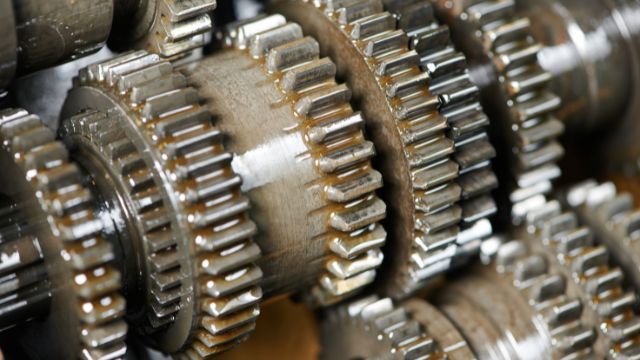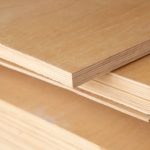Gears are an important mechanical part that helps in the functioning of the machines and the mechanisms. The use of gear drives is an important part of the automotive industry and is used to transmit the power from one part of the machine to another. It consists of interlocking teeth and two or more meshing gears that are connected and work in tandem while rotating. This rotating motion helps in delivering the motion and power for the wheels or any other performance.
Gear drive is used extensively in all types of devices that require the transmission of power and motion between two shafts. It is majorly used in cars, bicycles, motorcycles, and industrial equipment. machines and automobiles these days. There are various advantages and disadvantages of gear drive and we’ll look to discuss the same in detail down below.

Advantages of Gear Drives
1. Efficient Power Transmission
One of the major advantages of gear drives is their ability to provide efficiency in power transmission. Gears have a very minimal loss of energy during their operation adhering to its design and construction. This is the reason why they are used in automobiles and other industrial machinery. Utilizing gear drives helps to have significant energy harvest and doesn’t reduce input power transfer. This is down to the reason that there’s no such friction or slippage as in the case of other systems of power transmission.
2. High Precision and Accuracy
Gear drives have exceptional precision and accuracy due to their design. The gears have teeth designs that help to mesh together and provide a seamless connection. This way gears allow for a consistent and reliable transmission of power and motion from one part to another. This specific benefit makes for great precise control of speed and torque in machines like clock mechanisms or machine tools.
3. Versatility
Gear drives provide a versatility that the traditional system cannot provide. Its versatility in speeds due to the flexible design is what allows engineers to derive a larger speed and functioning. Since the size and the number of the teeth in gear can be switched and changed as per the need of the design, it allows a versatile option in terms of achieving different speed levels. This is much needed for the expansion of the gears and its usability in cases like cycles to major industrial conveyor systems.
4. High Torque
Gears are designed for transmitting high levels of torque as a major function of it. For say, in automobile-based transmission, gear drives help to transmit the engine’s torque levels from the engine to the wheels and change the speed of the drive. This factor helps in transmitting the torque at higher efficiency.
5. Durability and Longer Shelf Life
Gear drives are known for their durability and long-lasting usage. They require a bit of maintenance in the form of lubrication and maintenance which then helps the gear drives to provide a durable usage. The gear drives are made with resistance and strength in mind. They are made to withstand heavy loads and usage to last for a longer shelf life. This makes use of gear drive a good investment as it can give long-lasting usage and value for money.
Disadvantages of Gear Drives
1. Extreme Noise and Vibration
Gear drives come with a lot of noise and vibration. This has been a major problem with the use of gear drives as they produce heavy noise and vibration during the coming together of the gear teeth and mesh. This under heavy load or usage can emit large sounds and disturbances that can hamper the working environment. Add to it the wear and tear noises and friction that are generated during the usage, using gear drives needs to be taken with caution or noise handling option.
2. Limited Efficiency in Non-optimal conditions
Gear drives can diminish in efficiency if the conditions aren’t as ideal as they should be. When operating under conditions where there is less lubrication or improper maintenance, gear drives generate higher friction and energy loss which can hamper the longevity and the functioning of the gear drives. Furthermore, in conditions such as sub-zero or harsh terrains like wind, dust, or snow, gear drives can be affected and won’t be able to deliver top output.
3. Size of Gear Drives
It’s not as if gear drives are tiny in size allowing them to fit wherever required. Instead, gear drives are large and heavy which requires sufficient design and spacing to fit them. This makes it a hassle if the entire automobile or factory machine has a smaller area span and the gear drive needs to be fitted into a small area. The heavy and bulky nature coupled with the large size of the gear drives is often a constraint for engineers and gear operators.
4. Cost and Complexity in Nature
Designing a gear drive and putting it into manufacture is a costly thing. Gear drives can be costly and complex and require skilled manpower to get done. The need for precision in cutting and getting the gear drives in proper shape and assembling them requires skills and tools that may be difficult for smaller companies to source. Even buying them can be a hard task as it will cost a significant budget.
Final Words
Gear drives are essential components and offer a range of advantages in terms of power transmission, precision, speed versatility, and other abilities. But at the same time, they also have a few demerits which can hamper their functioning. As a business owner or personnel going for a gear drive, it is important to understand both sides of the story before going for it. We hope the aforementioned advantages and disadvantages helped you in getting better clarity.
Santosh Kumar, He is a SEO + Blogger have 12 years of experience in writing tutorial, informative and product reviews topics.
Page Contents

